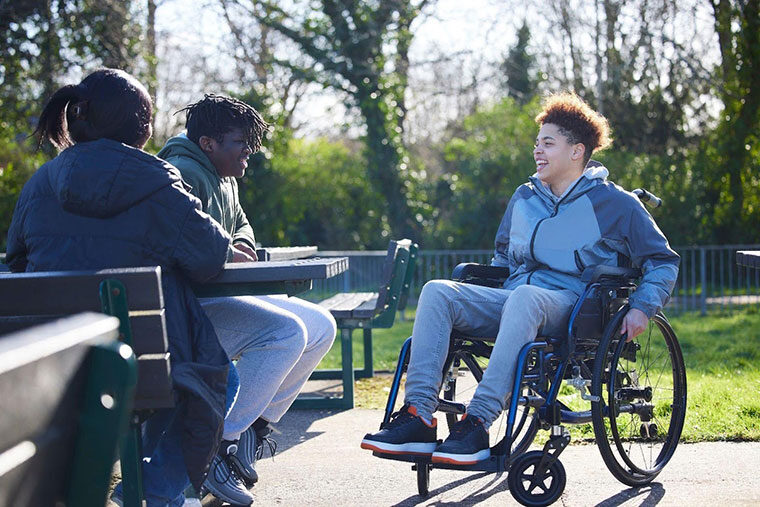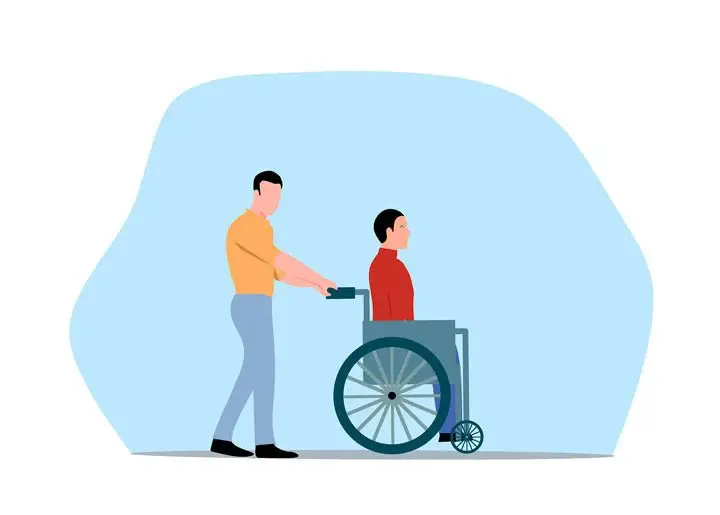Continence Care for Adolescents and Young Adults with Disabilities

Urinary incontinence (UI) is more common among adolescents and young adults than many people realize, especially for those with disabilities.
Introduction
In fact, studies show that around 7 out of every 100 teenagers aged 15 to 19 experience some form of incontinence, whether it’s daytime wetting or bedwetting. For young males dealing with this issue, it can affect more than just their physical health; it often influences their social life, self-esteem, and overall well-being. The challenges of managing urinary incontinence go beyond the condition itself, affecting how young individuals interact with their peers, their participation in school activities, and their confidence.
Addressing urinary incontinence early on is vital, as it can prevent further complications and provide a clearer path to better management. For many with chronic conditions, like those living with disabilities, the importance of early care is even more significant. Today, medical advancements mean that 85% of children born with chronic health conditions will live into adulthood, highlighting the need for continued support through adolescence and beyond.
This article will explore the causes and challenges of urinary incontinence in young males with disabilities. We will look at potential solutions, including medical treatments and lifestyle changes, and offer practical strategies for self-care to help these young adults manage their condition with confidence.
Understanding Urinary Incontinence in Adolescents and Young Adults

Urinary incontinence (UI) refers to the involuntary leakage of urine, which can occur during the day (daytime wetting) or at night (bedwetting). Among adolescents and young adults with disabilities, UI is often linked to neurological conditions, spinal cord injuries, and congenital disorders, such as spina bifida.
UI can significantly impact daily life, including school, social activities, and self-esteem. Teenagers and young adults with UI may face difficulties with confidence, as leakage can affect their participation in sports or social events. Mental health may also be impacted, with feelings of isolation or embarrassment often accompanying the condition. For instance, some individuals may experience increased anxiety about being in public or a loss of independence due to frequent bathroom visits or reliance on absorbent products. These challenges are compounded by the fact that many adolescents believe incontinence will resolve on its own, but it often requires medical intervention.
Addressing urinary incontinence early through medical support and self-care strategies can help mitigate its impact, improving the quality of life and mental well-being of those affected.
Causes of Urinary Incontinence in Disabled Male Adolescents and Young Adults
Urinary incontinence (UI) in young male adolescents and adults with disabilities is often related to conditions like cerebral palsy, spina bifida, and multiple sclerosis (MS), which affect bladder control due to nerve damage. Mobility issues and cognitive challenges make managing UI more difficult, as individuals may struggle with accessing bathrooms or recognizing the urge to urinate. Psychological factors, such as social isolation and stigma, also contribute to the emotional burden. These factors combined make it essential to address both the medical and emotional aspects for better management and support.
Management Strategies for Continence Care
For young male patients with disabilities, including cerebral palsy, spina bifida, and multiple sclerosis, managing urinary incontinence (UI) requires a multifaceted approach.
Behavioral Strategies
Behavioral therapies, such as establishing regular bathroom schedules and bladder training, are often effective in improving control over incontinence. Pelvic floor exercises can strengthen the bladder and sphincter muscles, providing better support for bladder control. Therapy for cerebral palsy may also focus on muscle control and coordination to improve UI management.
Medical Interventions
In cases where behavioral strategies are insufficient, medications can be considered. Anticholinergics and beta-3 agonists help manage detrusor overactivity, a common issue in neurological conditions like MS. In more severe cases, surgical options like bladder augmentation may be necessary.
Use of Absorbent Products
Absorbent products, such as adult diapers and pads, play a crucial role in managing UI for patients with mobility or cognitive limitations. Selecting the appropriate product is essential to ensure comfort and hygiene, depending on the severity of incontinence. For instance, products like QuickChange Wraps can offer discreet and effective protection, enhancing the patient's comfort and boosting self-esteem. These wraps not only prevent leakage but also provide a secure fit, which is especially beneficial for patients with spina bifida or MS who might face physical challenges in using traditional products.
By combining these strategies, healthcare providers can offer a comprehensive care plan for young male patients dealing with incontinence.

Addressing Psychological and Social Impact
Dealing with urinary incontinence (UI) can bring up tough emotions, like anxiety, low self-esteem, and even depression. These feelings can affect social interactions and mental well-being. That’s where a solid support system comes in—whether it’s family, friends, or healthcare professionals. Their encouragement and understanding can make all the difference. Learning to advocate for yourself and talk openly about incontinence can help you feel more in control and improve your social life.
Tips for Adolescents and Young Adults
Going out with friends
If you’re nervous about leakage while hanging out, being prepared can help ease the anxiety. Bring along pads, a spare change of clothes, and a bag for any wet items. It also helps to think of how to explain your situation, and having a friend you can count on for support makes things easier.
Bullying
Unfortunately, not everyone understands that incontinence is a medical condition, and some may tease you. It’s important to know this is not okay. Talk to someone you trust about it, and remember, you’re not alone.
Importance of Seeking Help and Professional Support
It’s essential to seek medical advice early if you or someone you know is dealing with urinary incontinence. The sooner you reach out, the better the chances of managing or even overcoming the condition. Continence clinics, specialist nurses, and support groups are valuable resources that offer guidance and support. Remember, incontinence is a medical condition, and there are effective treatments available.
Conclusion
Addressing continence care for young males with disabilities is vital for improving quality of life. With the right support and resources, managing urinary incontinence can be manageable and even preventable. Adolescents and young adults should not hesitate to seek help from healthcare professionals to take control of their health. Products like QuickChange Wraps can offer additional comfort and protection, helping to restore confidence and participation in daily activities.
For those seeking support,we invite you to purchase a 10 Count Trial Pack here or request a professional-use sample pack for healthcare institutions here.
References:
-
Cho ST, Kim KH. Pelvic floor muscle exercise and training for coping with urinary incontinence. J Exerc Rehabil. 2021 Dec 27;17(6):379-387. doi: 10.12965/jer.2142666.333. PMID: 35036386; PMCID: PMC8743604.
-
Continence Foundation of Australia. (2024, April 22). Mental health and incontinence. Continence Health Australia. https://www.continence.org.au/incontinence/medical-conditions/mental-health
-
Continence Foundation of Australia. (n.d.). Teenagers and young adults. Continence Health Australia. https://www.continence.org.au/incontinence/who-it-affects/teenagers-and-young-adults
-
Moore KC, Lucas MG. Management of male urinary incontinence. Indian J Urol. 2010 Apr;26(2):236-44. doi: 10.4103/0970-1591.65398. PMID: 20877603; PMCID: PMC2938549.

